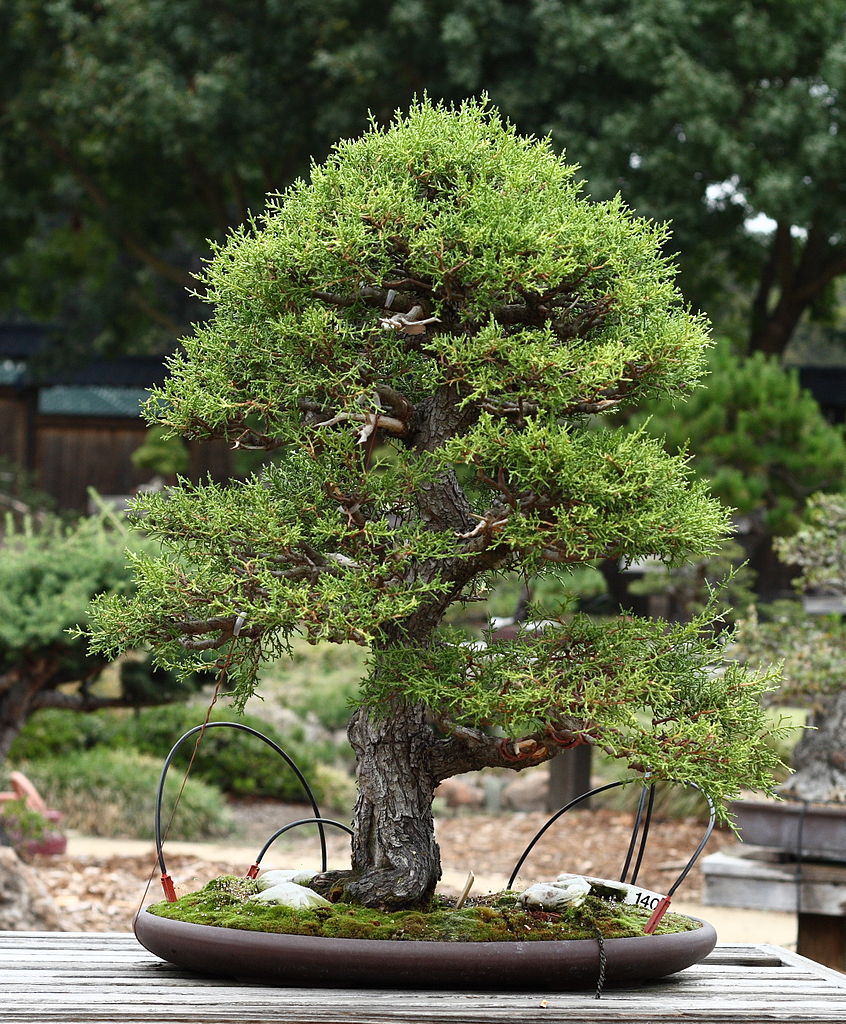Chapter 92 Cupressus (Hesperocyparis) arizonica
92.2 Soil: Lean Conifer Mix
Ratio: 2 parts bark, 1 part grit
Add-ins: dolomitic limestone (~5 lbs/yd); Tree-Tone (15 lbs/yd)
pH: ~6.5 (slightly below neutral)
Moisture: Fast draining
92.3 Light
Routine: Full sun. Foliage dies back and thins out without enough light.
92.4 Cultivation Notes
92.4.1 Potting & Root Pruning
Repot in spring when roots show new growing tips.
92.4.1.1 Top & Branch Management

Close-up of blue scale-like foliage of Arizona cypress. Link to original image.
Heavy pruning: do not develop new buds on older wood, so cutting back shoots could lead to bare spots on the tree. Only prune right before new growth in the spring.
Fine pruning: to control growth or prune for shape, finger prune in the late spring or early summer.
92.4.2 Feeding
Fertilizer is not needed routinely for mature trees, but feeding will increase growth rate when building the structure of young trees. If you have a need to increase how quickly the cypress tree grows, use a quality granular fertilizer. Faster growing trees need more water.
92.4.3 Pests & Problems
Pests include bagworms, which will cause defoliation as these larvae chew their way through the leaves, as well as cypress bark beetles that bore holes into the trunk and can kill the tree.
Chemical Warnings
92.4.4 Winter Storage
Store in mulch outdoors. Try to place in a brightly lit area so branches do not die back. No other special precautions are needed in our area.
92.5 Propagation Notes
Arizona cypress is a popular landscaping shrub, so is easy to find in nurseries and home improvement stores.
92.6 Artistic & Styling Notes

A Monterey cypress (Cupressus macrocarpa) in the informal upright style. This is a sister species to Arizona cypress. It naturally grows more dense foliage than Arizona cypress, so an equivalently styled Arizona cypress would have a looser structure. Link to original image.
92.7 Additional Information
92.7.1 Natural History
This is a North American species of tree in the cypress family Cupressaceae, native to the southwestern United States and Mexico. Populations may be scattered rather than in large, dense stands.
In the wild, they often are found in small, widely scattered scrub stands, not necessarily in large forests. They may be found mixed with canyon live oak and California fan palm.
92.7.2 In Cultivation
Many different cultivars have been selected.
